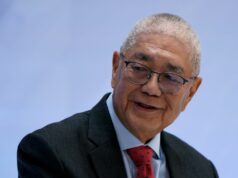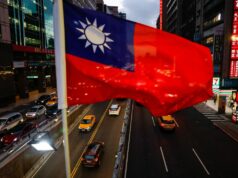S&P expects strong loan growth
DEBT WATCHER S&P Global Ratings sees Philippine banks’ loan growth at double digits this year as the banking sector and the Asia-Pacific region’s stable outlook is seen steady despite headwinds arising from trade tensions between the world’s two largest economies.
Gavin Gunning, S&P senior director and sector lead for Financial Institutions Ratings at S&P, said in a webcast last Wednesday: “Key expectations for the majority of outlooks in the Asia Pacific…the current stable trend is likely to persist. The majority of outlooks are generally stable and we think this trend will continue through the rest of the year.”
“Earnings and capital…are generally supportive of ratings at current levels. We see little ratings upside but we do note there are some downside risks at the credit cycle terms,” Mr. Gunning said.
Mr. Gunning said amid the US-China trade tensions, the cyclical downturn in Asia-Pacific should be “manageable” for majority of banks at current rating levels.
“Systemically-important private sector banks should continue to benefit from government support in most jurisdictions and we believe that will continue over the medium term… Interest rates remain low and central banks are dovish or becoming dovish. This should set the stage for potential deterioration in credit quality especially if there’s a short correction in asset prices and pull back in liquidity,” he said.
ASEAN BANKS SEEN STABLE
For the Association of Southeast Asian Nations (ASEAN), Ivan Tan, director at S&P’s Financial Institutions Ratings, said in the same webcast: “Our credit outlook is one of stability… However, we noticed that loan growth has slowed down basically due to headwinds from the trade war and also geopolitical uncertainty, the escalation of US-China trade tension, particularly in the corporate loans space.”
He noted that corporate loans of the banks in the region have come down sharply.
“The exception — like the countries where domestic consumption is driving the economy — so Philippines stands out,” Mr. Tan said. “The Philippines is not very export dependent. They have…infrastructure push going on. The domestic consumption remains very robust because of the young population.”
He said he expects local banks’ credit this year at a “very healthy double-digit growth jump to 15%.”
Mr. Tan, however, flagged the recent default of Hanjin Heavy Industries and Construction Philippines (HHIC-Phil) as a credit risk but said “this is not sectorial wide or fundamental deterioration in the credit quality per se. These are just one or two idiosyncratic risks…”
The South Korea-based shipbuilder filed for a corporate rehabilitation before an Olongapo court in January, leaving some $412 million in outstanding loans from BDO Unibank, Inc. Metropolitan Bank & Trust Co., Land Bank of the Philippines, Bank of the Philippine Islands and Rizal Commercial Banking Corp. in limbo.
Meanwhile, Mr. Tan said ASEAN banks will likely remain profitable despite the global monetary easing cycle on the back of cost controls.
“In terms of profitability…we expect profitability of [ASEAN banks] to remain quite good notwithstanding the [Federal Reserve] rate cuts…and a lot more economies have signaled their intention for more rate cuts…. What it means is that the interest margins of the banking system will come down,” Mr. Tan said.
“A lot of banks have invested in technologies and fintech and we are starting to see some rationalization in some other banks…even though margins are getting squeezed…we believe will enable the banks to maintain the fairly good net profit profile that they have,” he added.
Among the ASEAN banks S&P covers, loan quality has either stabilized or improved, Mr. Tan noted.
“Generally, with the policy rate cuts means that the servicing costs or repayment ability of the customers will be improved as the banks pass on the lower interest rates to their customers. We are seeing no widespread credit risks in the customers that the banks lend to,” he said.
Banks in the region are also expected to find support from “very good capitalization levels” amid global risks like the ongoing US-China trade war, Mr. Tan said, with lenders’ Tier 1 ratios comfortably above the regulatory minimum.
In its presentation during the webcast, S&P said Philippine banks’ Tier 1 ratio is at 15.4%, compared with Indonesia’s 21.3%, Thailand’s 15.8%, Singapore’s 13.6%, Malaysia’s 13.1%, China’s 11.0%, and India’s 10.8%.
Under the Basel 3 regime, banks’ Tier 1 capital must be at least 8% of their risk-weighted assets.
“All in all, the lower interest rate environment and the very healthy capitalization of the banks, our outlook is one of stability,” Mr. Tan said. — Mark T. Amoguis



